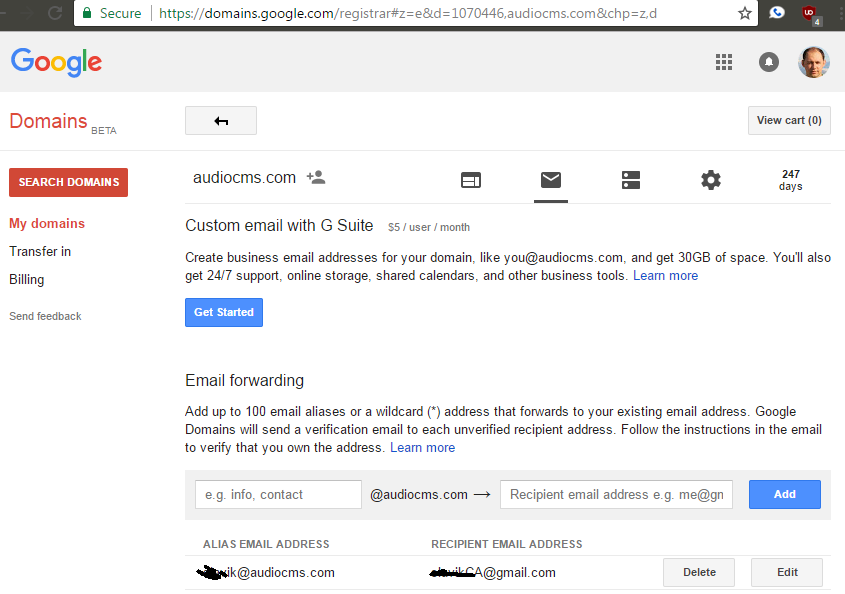Answer the question
In order to leave comments, you need to log in
Is it possible to use Gmail for my domain for free?
Is it possible to use mail from Google on my domain (1 person) for free outside the 14-day trial period?
Answer the question
In order to leave comments, you need to log in
Zoho to help you https://mail.zoho.eu/
+ you can use the bundle with gmail in different ways. Enough for most tasks.
One option is an alias, through the use of mail forwarding. I don't know if this can be configured for outgoing emails, but this is how I set up emails for one of my domains registered with Google to come to my regular gmail account:
You just need to register as a non-profit organization:
https://www.google.ru/intl/ru/nonprofits/products/
And then you will use Google mail for your domain for free
You must have a Gmail mailbox.
To receive mail sent to [email protected] (including an address confirmation email to be able to send outgoing mail!) third-party email forwarding services ( English "email forwarding") are indispensable.
In this case, you may encounter the fact that mail that is safely delivered to a Gmail address directly, when redirected via [email protected], falls into spam. Moreover, it seems that this depends both on the forwarding service used and on the sender ... In extreme cases, in the Gmail settings, you can create a filter "Never put in spam" if the recipient is [email protected] ...
To allow sending emails from the address[email protected] using Gmail, you can use Gmail's own SMTP server (smtp.gmail.com) as the SMTP server. In this case, the username should be specified as a Gmail name (it seems to work with or without the “@gmail.com” specification).
There are two possible approaches to what to use as a password. If 2-Step Verification is not enabled, you can use your Google Account password. But, for this, you must first allow access to "less secure applications" , after which, most likely, a letter will come from Google with a "critical security alert" that someone has enabled this access and a link by clicking on which you need to confirm your actions.
If 2-step authentication is still enabled (didn't try), you need to createapplication password (see " How to send emails from an alias " or " How to Utilize Google's Free SMTP Server to Send Emails ").
It should be noted that recipients of letters sent on behalf of [email protected] using the Gmail SMTP server will be able to see the Gmail address used for authorization in the service headers of the letter, in particular in the Return-Path. If the account on Gmail (for example, [email protected]) is used for other purposes and you don’t want to “shine” its address, then you can create a separate one to send mail with addresses from your domain (for example, [email protected]). .com).
If you want to do everything in one place and not switch between Google accounts too often, then you should also add the ability to send mail on behalf of [email protected] with exactly the same credentials in the common-account settings. In this case, letters sent from common-account on behalf of [email protected] will be stored in both places, and [email protected] will be visible in the service headers. Incoming mail can be immediately redirected to [email protected], but if you do not want to show this address even before the email forwarding service. mail (and, for example, ForwardEmail.net requires you to specify the target address in DNS records, that is, in the public domain), then you can either configure mail redirection to the second side on the first side, or mail collection from the first side on the second side.
Didn't find what you were looking for?
Ask your questionAsk a Question
731 491 924 answers to any question